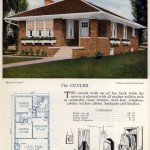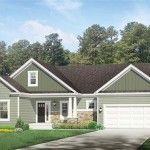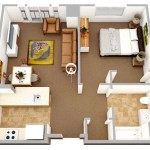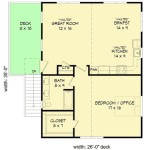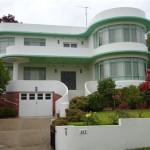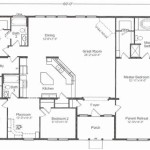One Story Log Cabin Plans: A Guide to Simple Living
Log cabins evoke a sense of rustic charm and tranquility, offering a unique and beautiful living experience. With their inherent durability and aesthetic appeal, log cabins have long been a popular choice for those seeking a cozy and sustainable home. One-story log cabins, in particular, provide a practical and efficient design that suits a variety of lifestyles. This article will delve into the world of one-story log cabin plans, exploring their advantages, key considerations, and essential elements to ensure a successful build.
Advantages of One-Story Log Cabin Plans
One-story log cabin plans offer several distinct advantages, making them an attractive option for homeowners: *
Accessibility:
The absence of stairs makes one-story cabins exceptionally accessible for people of all ages and abilities. This is particularly important for families with young children, seniors, or individuals with mobility limitations. *Simplified Construction:
Building on a single level eliminates the complexity and cost associated with constructing staircases and second-floor structures. This can shorten the construction timeline and reduce overall expenses. *Energy Efficiency:
The lower profile of a one-story cabin allows for efficient heating and cooling, reducing energy consumption and saving on utility costs. *Ease of Maintenance:
With fewer exterior walls and surfaces, one-story cabins require less maintenance and upkeep, simplifying homeowner responsibilities. *Flexibility:
One-story log cabins can be adapted to accommodate various needs and preferences, from small and intimate spaces to larger and open floor plans.Key Considerations for One-Story Log Cabin Plans
While one-story log cabin plans offer numerous benefits, certain factors should be carefully considered before embarking on the construction process: *
Building Codes and Regulations:
It is crucial to consult local building codes and regulations to ensure compliance and safety in your chosen location. These codes may influence design elements, structural requirements, and other aspects of the building process. *Site Selection:
The chosen site should be suitable for a one-story log cabin, considering factors such as topography, access, drainage, and utilities. *Foundation Type:
Depending on the soil conditions and local regulations, different foundation types may be appropriate for a log cabin. Common options include concrete slab foundations, pier and beam foundations, and crawl spaces. *Log Type and Quality:
The type and quality of logs used in construction significantly impact the durability, aesthetic appeal, and overall cost of the cabin. Common log types include pine, cedar, spruce, and redwood. *Interior Layout and Design:
Careful planning of the interior layout and design ensures optimal functionality and comfort. Consider the placement of rooms, windows, doorways, and appliances to maximize space and natural light.Essential Elements of One-Story Log Cabin Plans
One-story log cabin plans typically incorporate essential elements that contribute to their functionality and charm: *
Open Floor Plan:
Many one-story log cabin plans feature an open floor plan that connects the living, dining, and kitchen areas. This creates a sense of spaciousness and allows for seamless flow between different areas. *Large Windows and Doors:
Ample windows and doors provide natural light and ventilation, maximizing the connection between the interior and exterior. They also offer stunning views of the surrounding landscape. *Porches and Decks:
Porches and decks are common features in one-story log cabins, providing additional outdoor living spaces and enhancing the cabin's aesthetic appeal. They serve as ideal spots for relaxation, dining, and enjoying the natural surroundings. *Fireplace:
A central fireplace is a hallmark of many log cabins, creating a cozy and inviting ambiance while providing warmth during colder months. *Energy-Efficient Features:
Incorporating energy-efficient design elements, such as insulation, high-performance windows, and energy-saving appliances, can significantly reduce utility costs and minimize environmental impact.
Pin Page

One Level Floor Plans Log Cabin Cabins For Less

Single Level Floor Plans Wisconsin Log Homes

Single Story Log Homes Floor Plans Kits Battle Creek

Single Level Floor Plans Wisconsin Log Homes

Four Seasons Plans Information Southland Log Homes

Single Level Log Cabin Plans For 1 000 To 2 Square Foot Layouts

Lakeland Floor Plan Log Cabins For Less

Crestview

Single Level Log Home Floor Plan Ideas For Easy Living

